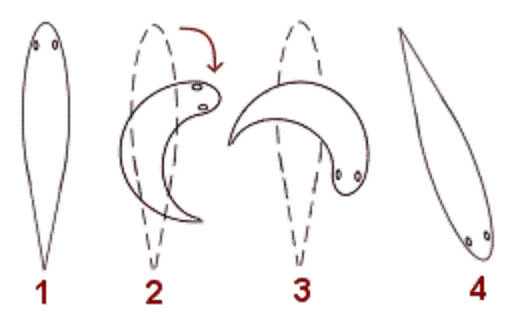
I wonder if ant researchers wished they had giant ants to study. Because it would definitely alleviate the back pain from crouching on the sidewalk with a magnifying glass (although giant ants would be extremely terrifying to have walking around). For neuroscientists, the Mauthner cell has somewhat been a “giant ant” for studying how neurons operate in fish and some amphibians. Luckily, I’ll get a chance to experiment with these cells in zebrafish over the summer so I found out some cool stuff about how they work earlier this week.
The Mauthner cell or M-cell is a very distinct pair of neurons located at in the hindbrain of most fish, where one M-cell is designated for one half of the brain. M-cells are responsible for a very quick startle/escape reflex, known as a C-start. When a C-start reflex is prompted—as a result of a stimulus in the water—the fish rotates towards a direction of escape, resembling a letter “C”, then the animal propels itself forward to flee. The M-cells are situated as a pair, and if one M-cell is stimulated, a corresponding C-start reflex occurs. The C-start occurs on the opposite side of stimulation so if the fish is scared from the left, it flees to the right—and vice versa. The C-start is extremely quick: the stimulus occurs, then 5-10 miliseconds later the M-cell discharges, then only 2 ms after that, the corresponding muscle contracts for escape.
E.J. Furshpan and T. Furukawa from Harvard Medical School began studying the M-cell in the 1960s and since then many opportunities have opened up for the study of electrophysiological and morphological makeup of the nervous system, including here at the University of Chicago :)